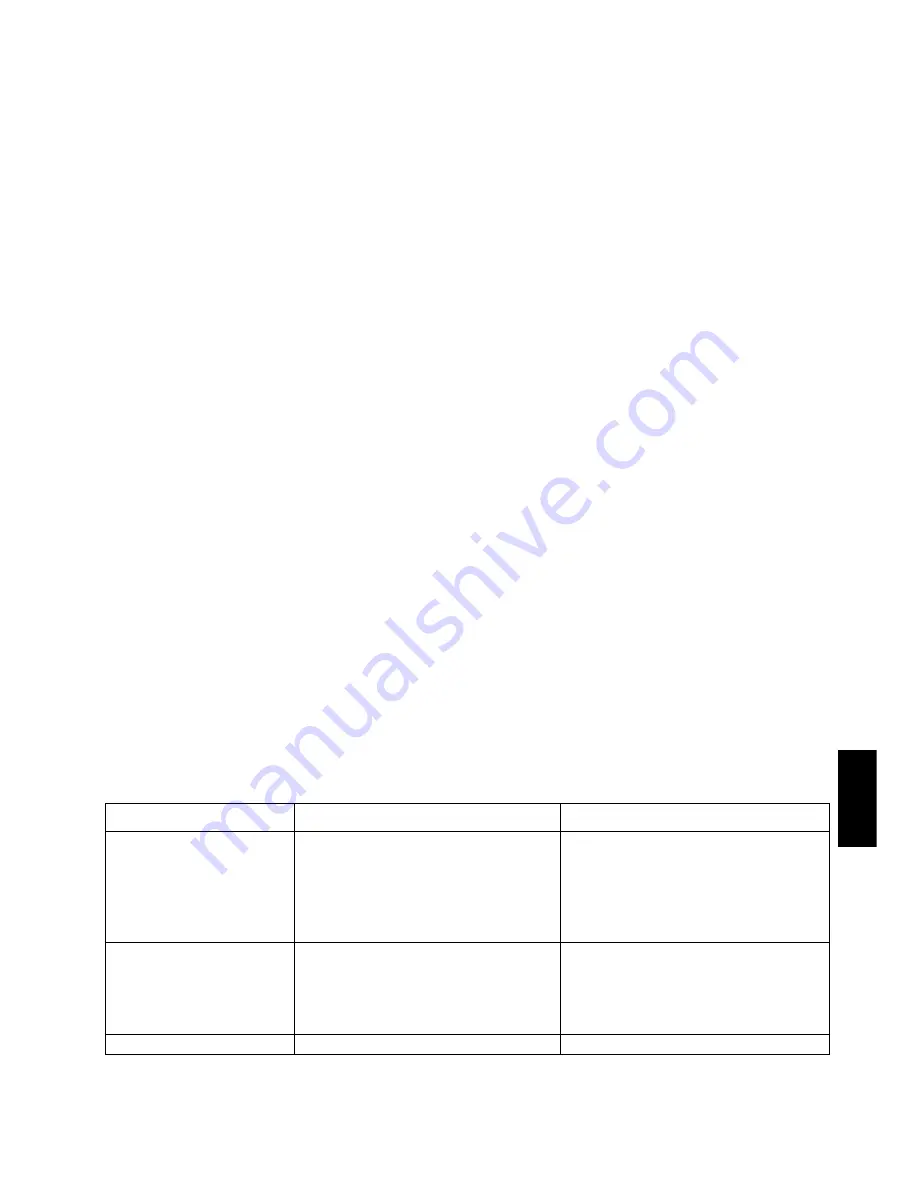
MAN-AMH-LA05-180418
- 5 -
© 2018 All Material Handling
standing links positioned away from the drive wheel in the hoist. If the chain is not installed correctly
then reinstall (ref. Dwg. C-02). Always use a genuine AMH replacement chain.
6. BRAKES. Raise a load equal to the rated capacity of the hoist a few centimeters (inches) off the floor.
Verify hoist holds the load without drift. If drift occurs, contact your nearest service repair center for
repair information.
7. SUPPORTING STRUCTURE. If a permanent structure is used inspect for continued ability to support
load.
8. LABELS AND TAGS. Check for presence and legibility. Replace if necessary.
9. END ANCHOR. Ensure end anchor on hoist is installed and unbent. Repair if damaged, replace if
missing.
Hoists not in Regular Service
1. Hoists which have been idle for a period of one month or more, but less than one year should be given
an inspection conforming with the requirements of "Frequent Inspection" before being placed in
service.
2. Hoists which have been idle for a period of more than one year should be given a complete inspection
conforming with the requirements of "Periodic Inspection" before being placed in service.
3. Standby hoists should be inspected at least semi-annually in accordance with the requirements of
"Frequent Inspection." In abnormal operating conditions equipment should be inspected at shorter
intervals.
Lubrication
General
The use of thread lubricant or anti-seize compound is recommended for threaded components. Unless
otherwise stated, remove old lubricant, clean the part with an acid free solvent and apply a new coating
of lubricant to the part before assembly.
Gears
Unscrew nuts on the opposite side of the hoist as the hand chain, and remove gear cover and support
plate. Remove old grease and replace with new. For temperatures -29° to 10° C (-20° to 50° F) use EP 1
grease or equivalent. For temperatures -1° to 49° C (30° to 120° F) use EP 2 grease or equivalent.
Load Chain
1. Lubricate each link of the load chain weekly. Apply new lubricant over existing layer.
2. In severe applications or corrosive environment, lubricate more frequently than normal.
3. Lubricate hook and hook latch pivot points with the same lubricant used on the load chain.
4. To remove rust or abrasive dust build-up, clean chain with acid free solvent. After cleaning, lubricate
the chain.
5. Use a SAE 50 to 90 EP oil.
Trouble Shooting
SYMPTOM
CAUSE
CURE
Will not ratchet up but
chain can be pulled
through by hand
without load
Operator continues to crank the
lever in the down direction, when
the tail chain ring is snagged or is
stopped against the hoist frame.
If a significant load is attached,
and lifted the brake will recover Or,
with no load, by pulling the chain
through the hoist until the hook is
against the frame, then cranking
the lever in the up direction.
Will ratchet up but
chain cannot be pulled
through by hand
without load
Hoist is relieved of the load by
some other means than lowering
with the hoist, or if abused by
pulling the lower hook block tightly
against the hoist frame.
Turn the directional lever to the “D”
down position and pull sharply on
the lever handle or re-apply a
sufficient load then crank the lever
down.
All other symptoms
Unknown
Consult qualified service
E
n
g
lis
h






































